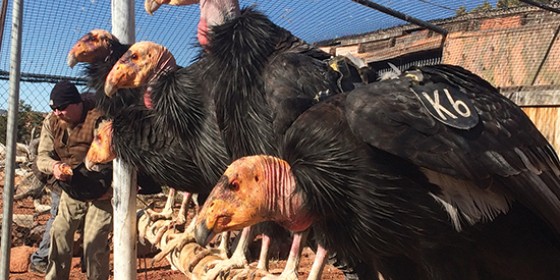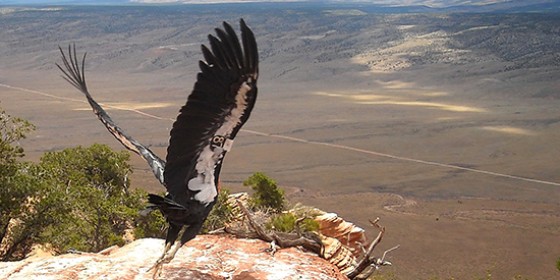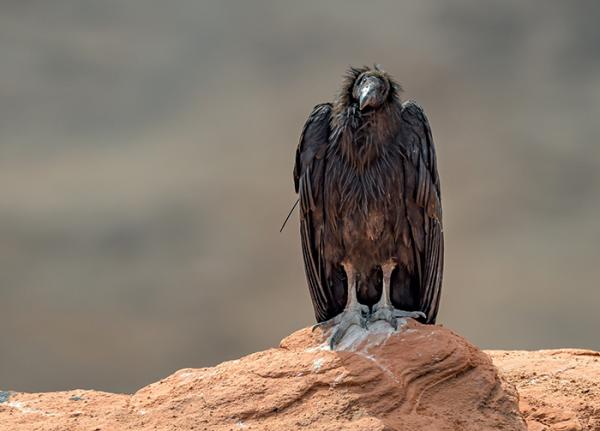Long before humans arrived in North America, these finely tuned scavengers relied in part on hunters—sabertooth cats and other large predators—for carrion. Condors’ clean-up role hasn’t changed, but new hunters to the scene can unintentionally leave behind a deadly contaminant: lead from spent ammunition.
The California Condor is a hardy species that survived mass extinctions of the last Ice Age, yet the entire population was reduced to just 22 individuals by the 1980s. Scientists suspected that lead poisoning played a role in the species’ decline, and recent research by The Peregrine Fund confirmed that over half of all condor deaths are due to this one preventable cause.
Threats to California Condors

Angela Woodside

The ‘aha’ moment occurred when we x-rayed deer harvested with common lead-based bullets. A constellation of tiny fragments, too numerous to count, appear in the tissue surrounding the bullet’s path. Not only do California Condors ingest this lead, it’s evident that many other species, even humans, may be exposed to lead-tainted meat. Like the canary in the coal mine, the California Condor has alerted us to an unforeseen and preventable hazard.
By switching to non-lead ammunition, hunters can eliminate the potential for lead exposure to any animal. Thanks to our work with Arizona and Utah wildlife agencies over the last decade, more than 80% of deer hunters on Arizona’s Kaibab Plateau now take voluntary actions to prevent exposure. Their conservation ethic will inspire others to make the switch to copper, but we need to spread the message to a wider audience.
To accomplish this, we have united to form a North American Non-Lead Partnership, whose sole purpose is to reach hunters, shooters, and other sporting and conservation groups with information about preventing lead poisoning.
The world population of California Condors continues to grow slowly, with more than 400 now in existence. More than half live in the wilderness, ready to fill their niche as skilled scavengers if only we can make their world a little safer.
Learn more:
- Watch a segment on CBS This Morning featuring our California Condor project!
- Listen to condor manager, Tim Hauck, talk about our efforts to manage a population of California Condors in Arizona & Utah.
- Learn about our work as co-founders of the North American Non-lead Partnership (NANP)
- Learn more about California Condors






